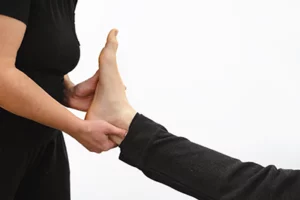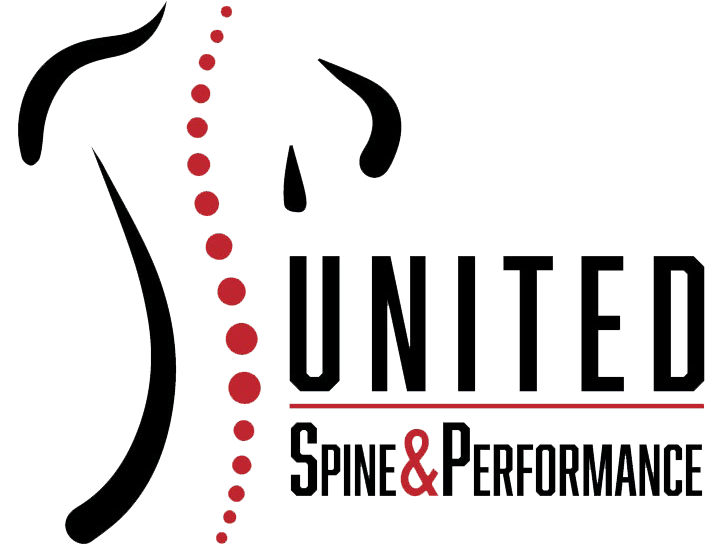Do you suffer from foot pain? Is that first step out of bed excruciatingly painful? Are you struggling to maintain daily activities due to your feet? Follow along to see if you may be experiencing Plantar Fasciitis and if conservative care is for you.

Simply put, plantar fasciitis is pain in the bottom of the foot, specifically, the arch. Sometimes plantar fasciitis becomes a catch-all term, and so any type of foot pain becomes “plantar fasciitis.” Obviously, that’s not the case, and proper assessment is required.
The plantar fascia is a thick band of soft tissue that runs through the bottom of the foot and connects the heel bone to the toes. This tissue provides the foot with arch support and helps us walk, stand, run, jump, and do anything that necessitates pressure on the feet.
When the plantar fascia becomes irritated and inflamed because of the stress it takes on, the condition is called plantar fasciitis.
People who commonly suffer from plantar fasciitis include:
- Runners, walkers, and others who participate in high-impact sports and exercise
- Pregnant women or overweight people
- Those who regularly stand for extended periods
- Older people with wear and tear
- Those who wear improper or unsupportive shoes or shoes in poor condition
- Those with structural dysfunction or imbalances in the foot
Recognizing plantar fasciitis can be challenging, as there are several symptoms it can produce.
You may have plantar fasciitis if you experience the following symptoms:
- Stabbing and intense pain in the heel of the foot
- Swelling around the heel
- Aching pain in the foot
- Pain with first steps in the morning or after sedentary periods
- Foot pain when pressure is placed on the foot
- Foot and ankle stiffness and loss of range of motion
- Pain in the arch of the foot
- A tight Achilles tendon
These symptoms can impact your lifestyle, reducing productivity, preventing physical activity, and even disrupting your sleep. Getting the help your body deserves is closer than you think.
Conservative care options for Plantar Fasciitis

Chiropractic care is often the first place turned to for effective, non-invasive injury relief.
Plantar fasciitis can be managed with a multidisciplinary approach that allows the body to heal safely.
Common ways to treat plantar fasciitis with chiropractic include:
- Chiropractic Manipulation
- Soft Tissue Manipulation
- Instrument Assisted Soft Tissue Manipulation (IASTM)
- Dry Needling/Acupuncture
- Rehabilitation Exercises
- And more
Home exercise programs and at-home treatments are critical for long-term resolution.
At-home treatments include:
- Periodic rest periods to relieve feet
- Stretches and rehab exercises
- Self-massage
- Night splinting
- Icing the bottom of the foot (pro tip: freeze a water bottle, then roll it under the foot for an ice massage)
Utilizing these chiropractic strategies offers several benefits, including:
- Little to no downtime
- Quick healing process
- No reliance on pain medications
- Reduced discomfort and improved mobility
- Lifestyle guidance to keep your body protected
- Reduced stress and anxiety
- Improved sleep quality
If you’re ready live without limitations, let’s get started.
Visit United Spine & Performance to Alleviate Plantar Fasciitis Pain
We can help you get back on your feet faster and smarter. Using Chiropractic care and a multidisciplinary approach, we’ll design the optimal plan for your needs. Don’t let plantar fasciitis pain control you, we’ll get you back to living without limitations.

